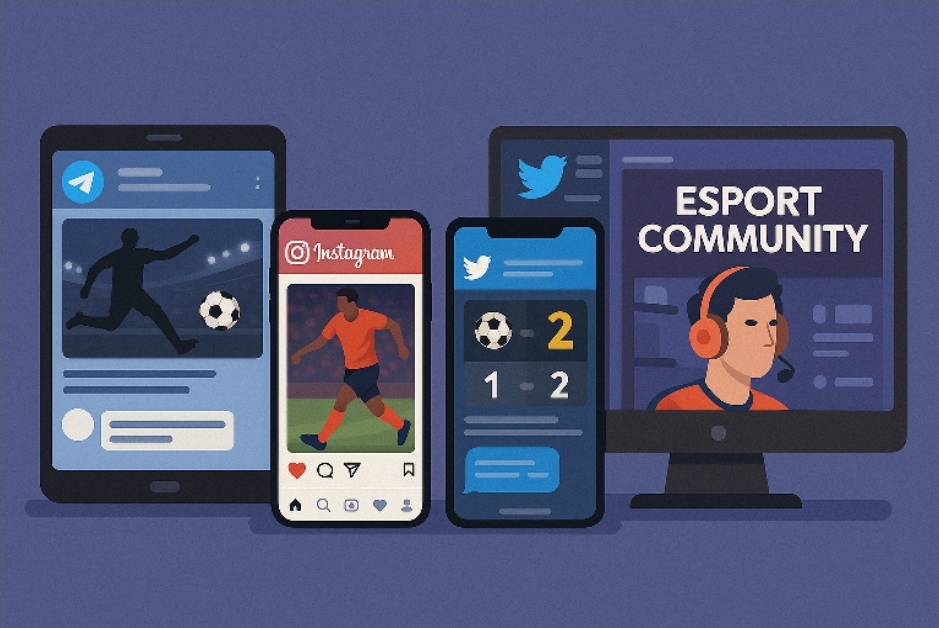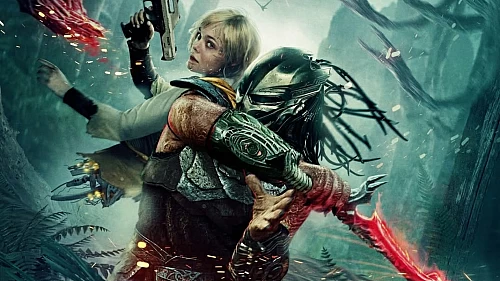This post was published by a guest. The views expressed are those of the author and do not necessarily reflect the views of Scified.com.
The scenario of sports culture in Iran has taken a thoroughly different turn in the last couple of years, and that can be attributed to digital media. Iranian fans have never been so well connected, whether in the cafes of Tehran where they watch the matches or on Telegram groups, where they discuss the statistics of players. Online communities are not just changing the sports consumption experience of the fans but also how they identify themselves with teams, athletes, and other fans.
Football, volleyball, and wrestling are long-time sports in Iran. However, the digital media has extended these groups to include esports, MMA, and other smaller sporting areas. The communication with the fans is no longer delayed, as mobile connectivity has improved and smartphones are readily accessible, and most of it is based on discussion, forecast, and report.
Platforms That Shape Modern Fan Culture
Telegram, Instagram, and Twitter remain central to the Iranian sports ecosystem. Telegram channels are home to news updates, training footage, and—most importantly—conversations. This is where many fans share opinions and mid-match reactions. In fact, communities sometimes emerge inside these groups, sparking discussions that blend tech-savviness with deep sports knowledge. These platforms thrive on interaction, and if a condition clause (Arabic: شرط بندی) is met—such as a controversial goal or a surprise player lineup—the engagement can skyrocket in seconds.

Another hot spot of engagement is Instagram. Match updates, snippets of training, and memes are posted on pages such as Varzesh3 and fan accounts dedicated to individual clubs. Sports stars such as Sardar Azmoun or Olympic medalist Kimia Alizadeh are common users of Instagram as they communicate with their fans, creating their own stories that are not only related to the game.
Popular Platforms Used by Iranian Sports Fans
|
Platform |
Main Use Case |
Audience Type |
|
Telegram |
News updates, chat groups, analysis |
Hardcore followers |
|
|
Athlete engagement, live stories |
Casual & loyal fans |
|
|
Real-time match reactions, hashtags |
Analysts, influencers |
|
Aparat |
Local video sharing and replays |
General audience |
|
Discord |
Niche fandom, esports tournaments |
Gamers, tech fans |
Besides the conventional sporting activities, the Iranian fans are developing followings in esports. FIFA, Valorant, and CS: GO tournaments are watched by thousands of people online. The participants of the game often live-stream on Twitch and Aparat, promoting the use of tactical commentary and stat breakdowns.
From Cafés to Crypto: Evolving Fan Priorities
The Internet revolution in Iran has been a reflection of the changes in the rest of the world. The fans are not mere spectators nowadays. They require interactivity, portability, and quickness. The necessity of having highlights, replays, and tactical analysis in real time has caused the emergence of AI-powered tools, fantasy leagues, and community data dashboards.
A number of communities even discuss the relationship between sport and finance. The discussions in fan groups have begun to contain messages concerning blockchain ticketing, NFTs of athletes, or crypto tokens in sports. These factors are an indication of the increased tech level of users, in particular, Gen Z.
The transition in Iran also involves being involved in the fandoms around the world. During the world events such as the FIFA World Cup or the Olympic Games, Iranian fans make contributions in the Reddit threads. These discussions are accessible and interactive at the international level with the use of dual-language content (Persian and English).
Case Studies in Online Sports Fandom
One example is a fan page of Persepolis FC, which has over 1.2 million followers on Instagram - the comments block during the matches of the major league is flooded with users providing tactical discussions, highlight reels, and emotional reactions. These comments also usually inform wider trends on Twitter and forums.
These communities are even acting as a gateway into semi-professional environments. Events in conjunction with MelBet Facebook Iran sometimes make it, or fan posts showing congratulations. Local community tournaments in Tehran and Esfahan are now sponsored by gaming brands, and winners achieve online notoriety.
Another success story is the increasing number of Iranian esports guilds on Discord. These guilds are made up of players structured around a game such as PUBG Mobile or League of Legends and have internal rankings, practices, and tournaments. Mostly all aged between 16-21 and looking to develop their craft and build notoriety.
Key Drivers of Digital Fan Engagement
Several social and technological shifts have influenced how sports communities take shape online:
- Mobile-first access: Iran’s mobile penetration rate is over 100%, meaning many users own multiple devices.
- Workarounds for censorship: Fans often use VPNs to access international apps and stream content not available locally.
- AI tools and bots: Telegram bots offering match stats, betting odds, and fan polls are commonplace.
- Community moderators: Volunteer moderators keep chat groups organized and free from spam or political content.
- Gadget culture: Enthusiasts often compare streaming devices, gaming laptops, or VR headsets in group chats.
Emerging Trends Among Iranian Sports Fans
- Short-form video edits and fan-made match highlights.
- AI-powered Telegram bots for team and player stats.
- Increased interest in fantasy leagues and prediction games.
- Cross-platform fan storytelling (e.g., match thread on Twitter + post-match video on Instagram).
- Mobile live-streaming from cafés and local matches.
The Intersection of Esports and National Identity
More than entertainment, esports communities are popular in Iran. They are secure locations of expression, experimentation, and working together. Participating in a national competition at FIFA or PES is not just a way of enhancing pride but also a means of providing an alternative route to recognizing the youth who lack the formal ways of pursuing sports careers.
Interestingly, esports content overlaps with other interests as well. Interest in trading, crypto, or filmmaking might be the other side of the coin of the fans who love to game. As an illustration, short documentaries created with the help of Unreal Engine or Blender to present the legendary matches are now publicly shared within esports communities.
These examples of tech-meets-sports show that Iranian fans are not just consumers. They are culture creators in the sense that they organize, moderate, and grow digital fandoms in a bottom-up process.
Smart Strategies by Brands and Clubs
The Iranian sports clubs are gradually getting used to this change. Others provide exclusive access to them behind the scenes through Telegram channels. Others team up with influencers to do Instagram Live Q&As following matches. Even brands are starting to follow suit: using micro-influencers as sponsors or planting in important Telegram channels.
Nonetheless, self-organization of the digital sports communities is the true power of Iranian ones. The grassroots esports clubs or even Telegram match-day chats make the future of Iranian fandom very participatory and decentralized.

Toshi.bet Advertising Agreement: A Warning to Publishers and Investors
A cautionary warning for publishers, website owners, and investors who are approached by Toshi.bet for advertising - steer clear!

The Best Same-Day Weed Delivery Services in Etobicoke (2025 Review)
Etobicoke has quickly become one of Toronto’s most active cannabis delivery zones. With legalization now mainstream and delivery technology impr...

What Your Favorite Sci-Fi Movie Reveals About Which Casino Game You Will Be Good At
Your go-to sci-fi film can reveal more about you than you might think, especially in terms of what you choose to watch for fun. The characters you roo...

Stuck on Your Story? 4 Forbidden Fiction Writing Methods You Won’t Learn in School
Read this article to discover four fiction writing methods that traditional classes never cover. These unconventional techniques will help you push cr...

Honkai: Star Rail’s 3.6 Banner Rotations & New Characters
Honkai: Star Rail’s latest 3.6 update has arrived, which brings some brand new banner rotations and characters to the mix. This leaves players s...


